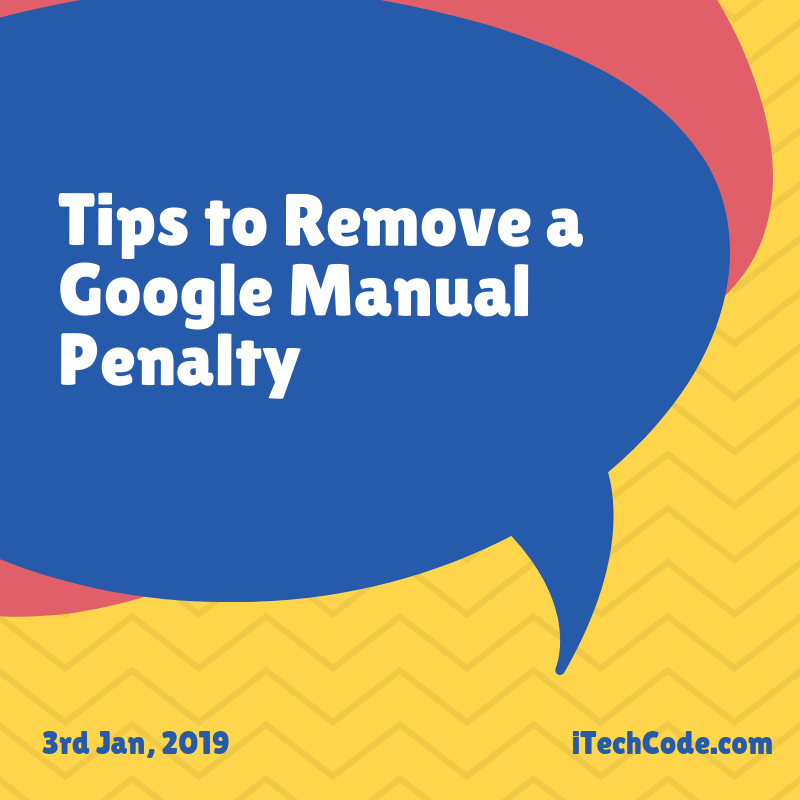Getting slapped with a Google penalty can be devastating. It affects your ranking in the search results page, which can lead to a drop in your website traffic. This can then lead to a decline in sales, which is clearly very bad for business. There are two main categories of penalties, manual and algorithmic. Here, we will focus on Google manual penalties and how you can remove them.

What is a Google Manual Penalty?
Google manual penalties aren’t related to changes in the search engine’s algorithms. Instead, these penalties punish your website for suspicious or spammy behavior. These penalties are given by human reviewers who have determined that your website isn’t in compliance with Google’s quality guidelines. If your site is flagged for violations, it can be demoted in the search engine results, or even removed entirely. There are several manual violations that might occur, including unnatural backlinks, a hacked website, spam, sneaky redirects, content that’s too thin, and keyword stuffing.
Stuart McHenry of McKremie.com is an SEO expert that provides google penalty recovery services, “Manual actions against your website are fairly apparent. In addition to seeing a large drop in your organic traffic, you’ll also find an email notification in your Webmaster Tools inbox. The email will generally let you know what type of penalty you’re receiving.”
Perform an Audit on Backlinks
If you’ve received a link-based penalty, you’ll have to perform a link audit to find out which backlinks are hurting you. Google actually provides some of this information for you. Under your Webmaster tools, you can click on “search traffic.” Here, you’ll find sections that provide information on links to your site as well as internal links. When you click on “links to your site,” search for those that look suspicious. These include sites that contain numerous links to yours, links from sites unrelated to your industry, and links from low-quality or spammy sites. Google may even identify the exact links that have caused your penalty. Keep a spreadsheet of all suspicious links. If the offending links are within your own website, such as those found in a blog comment, remove them immediately.
Remove Bad Links
After you’ve identified all of your suspicious links, you’ll need to contact the webmasters or owners of the sites they come from to have them removed. Find the contact information for each site and send an email about removing the links. Be sure to be polite. If the website didn’t intentionally mean to harm you, they’ll most likely be willing to work with you. If you don’t hear back from the webmaster, send a second email. You may need to be a bit firmer and mention that you’ll be disavowing the site if they don’t comply. Disavowing a website can damage its reputation, so most webmasters will be spurred to act.
If the webmaster still refuses to respond and you’ve done everything you can do, your next step is to disavow the website. Google has a specific disavow tool. With this tool, you essentially tell Google that you don’t want links from the websites you list to count toward your rankings. Make sure that you’ve done everything in your power to contact the webmaster of the offending websites before you go this route.
Fix Your Site Content
If your content is too thin or you’ve been flagged for keyword stuffing, you’ll need to fix the content in question. This means either fixing the content or removing it entirely. With so many websites today, you’ll want to provide your visitors with high-quality content that provides valuable information. Look thoroughly through your website. Get rid of automated, scrapped, and duplicate content. Make sure that the content on your website provides something of value to your visitors.
Submit a Reconsideration Request
After you’ve dealt with the issues causing your penalty, you can submit a reconsideration request. This request outlines what you’ve done to fix the problem and asks Google to take another look at your site. When writing your request make sure that you include an explanation of what the issues were, the steps you’ve taken to correct them, and documentation on where your website is now. To submit your request, go to the “manual actions report” and select “request a review.”
Once you’ve submitted your request, you’ll have to wait. It could take a few weeks, so you’ll need to be patient. If It’s been more than 8 weeks, submit a new request and let Google know that you never heard back from your first one. There are 4 possible responses that you can get. The best one is that Google has approved your request. The other responses include rejection of your request, there are no manual actions against your site (your penalty may be algorithmic), or that your request has been processed. If you have received the last response, you may have fixed some issues, but there are still others that need to be corrected.
Put Good Policies into Practice
After your request has been approved, it can take several months to regain your traffic and your rankings. Putting good policies into practice will help to avoid new penalties in the future. Look over Google’s quality guidelines to make sure that your website is following them. Work to build high-quality backlinks to your website and make sure that any content you add to your website is both high-quality and provides valuable, useful information for your visitors.
A manual penalty, or any penalty for that matter, can be devastating, but it isn’t the end of the world. With some time and patience, you can determine the source of your penalty, remove it, and improve your website. In doing so, you’ll be able to boost your ratings and regain your website traffic.
You can also stay updated by subscribing to iTechCode.